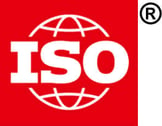When you think of all the ways to join metals, friction stir welding probably isn’t the first thing that pops into your head. This is especially true if you use powder metallurgy.
So, what could the two possibly have to do with each other? Actually, friction stir welding materials can include those made from powder. In very specific applications, friction stir welding is a viable option for joining powder metal parts.
What Is Friction Stir Welding?
Friction stir welding has only been around since 1991, originating from The Welding Institute in the United Kingdom. It’s a relatively new joining process, so many metal manufacturers have limited or no understanding of its inner workings.
Most people are familiar with basic arc welding -- where the engineer uses electricity and an electrode stick to melt two metals to form a bond. The also-common laser welding uses a laser to achieve the same goal, just at a finer level of detail. But friction stir welding (FSW) doesn’t require the same level of heat as these methods. It uses friction caused by a rotating tool to gently fuse without melting of the metals and stir them together, creating a strong bond.
Notably, friction stir welding has helped build the external tank on space shuttles, including the SpaceX shuttle by Tesla. As for powder metal parts, many in the industry are still deciding what to make of this emerging form of welding.
How Potential Friction Stir Welding Materials Can Include PM
In the 3 or so decades since its invention, friction stir welding has made its way into a handful of powder metallurgy applications. If you’re aware of others, we’d love to hear them!
Welding of Two Powder Metal Parts
Most of the time, we recommend sinter bonding, sinter brazing, or another bonding processes for joining powdered metal parts. But you can use friction stir welding if the application calls for it.
Friction stir welding of dissimilar alloys and materials is possible and sometimes even desirable if you don’t want to fully melt the lower melting point metal. For example, during conventional welding certain steels will transform to martensite in the area adjacent to the weld (the so called heat affected zone, HAZ) if you heat them to the melting point. That results in a very hard, crackable surface – making some joining methods a nonstarter for some applications.
Friction stir welding keeps the metal in a state that’s just short of melting. You have an impressive amount of heat input control, which allows for minute adjustments for the end result. The surfaces of the two parts are in very intimate contact and bond well without the risks inherent to melting. The joints are often as strong as the base metal, creating bonds that are reliable enough for use in rotary engine housings.
On the manufacturer’s side, using FSW for welding powder metal parts also creates a safer work environment because it creates no toxic fumes. More relevant to the buyer, friction stir welding has minimal tooling needs, which keeps labor and material costs down.
Surface Hardening
You can take a hard particle like like silicon carbide and weld it to the original component’s surface with FSW. That leads to a very hard and wear-resistant surface on the part. In this case you’re basically using friction welding as a psuedo-derivative of metal plating.
If you have a tool you want to make very hard so surface abrasion isn’t an issue, FSW might be the way to weld.
Surface Densification
Friction stir welding can be used in a similar fashion to roll densification to get a highly dense surface on a part. The interior of the part remains lower-density, which can be useful if you want to keep your parts lightweight.
Sealing Porosity
Friction stir welding is seeing use in more industries to seal the joints between aluminum and aluminum alloys. It can be used in the same way to seal powder metal components.
Remember that melting can create porosity, allowing contaminants to penetrate the part’s surface. And hopefully you already know that powder metal parts are inherently porous.
The compaction and sintering processes can’t fully eliminate porosity, which can be a problem if you want to keep a component sealed. Since it doesn’t fully melt the metal, FSW can be used to seal porosity at the surface so you don’t get infiltration into the component’s pores.
Other Problem-Solvers
Friction stir welding is a niche application that can replace other powder metallurgy joining methods on special occasions.
Sinter bonding and sinter brazing or other welding methods are also valuable joining tools in the powder metallurgy trade. And there are other ways an advanced powder metallurgy manufacturer address challenges like density, porosity, and surface hardness.
If you’ve got such a challenge, feel free to ask a powder metallurgy engineer a question below:



